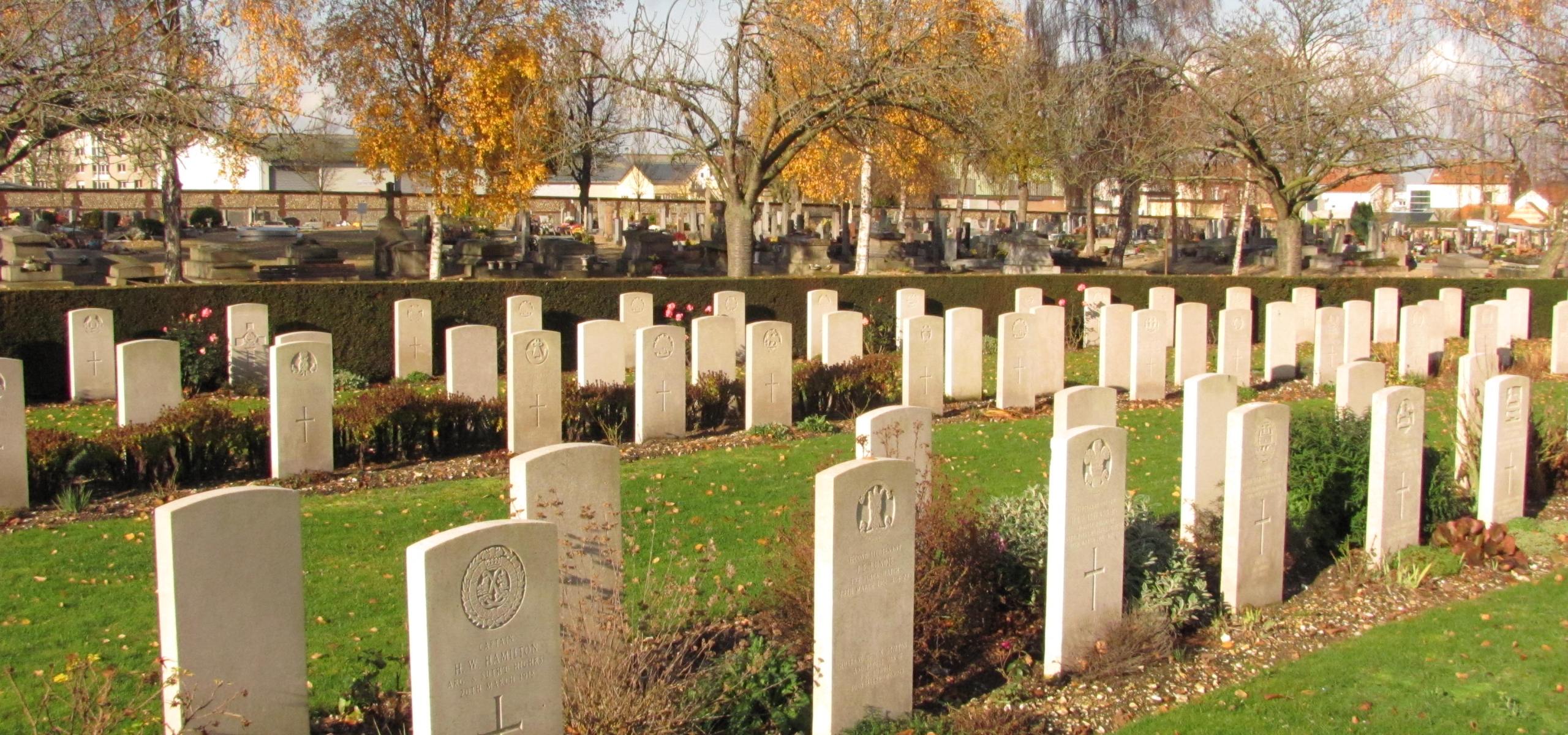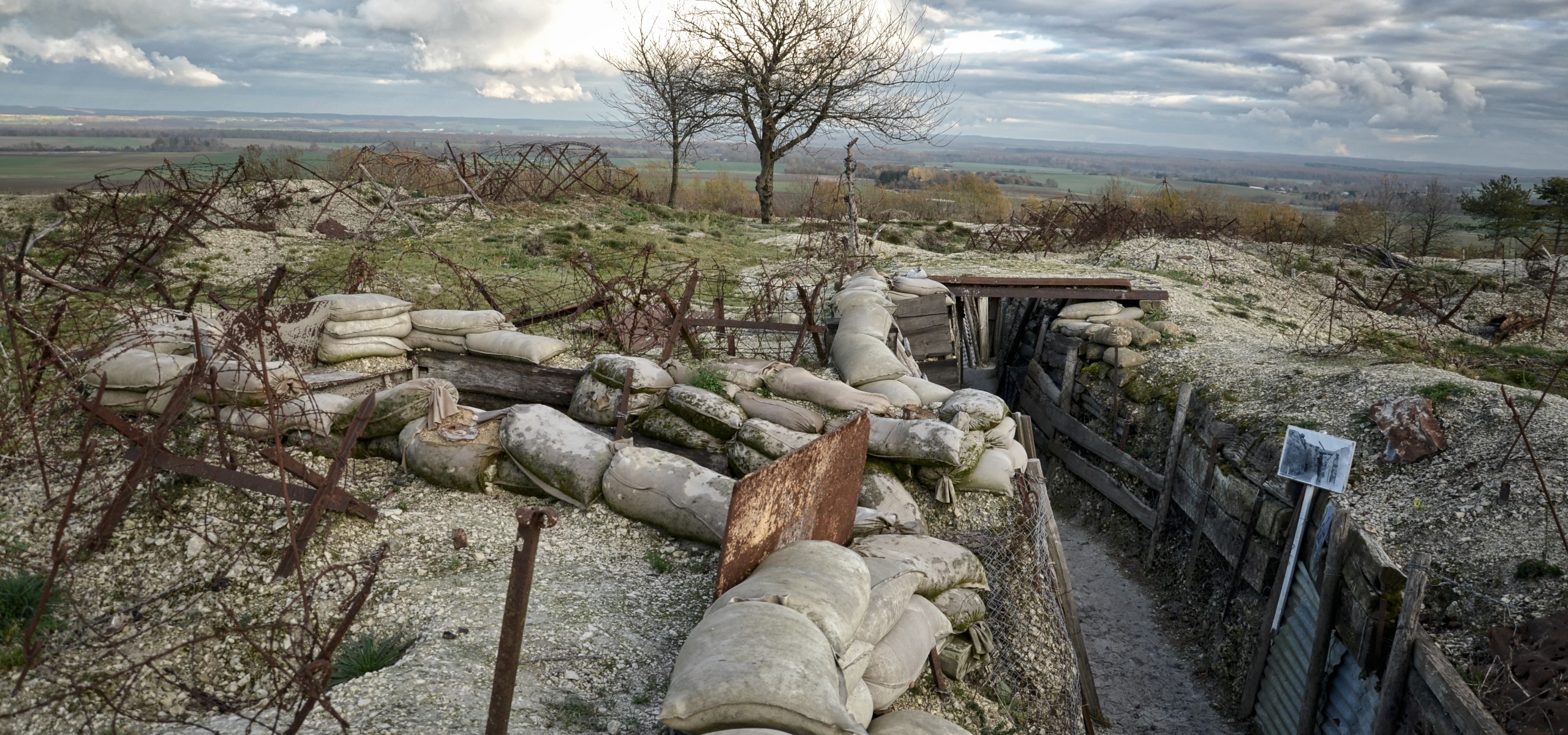WW1 Revisited
A Great War Journey with Paul Reed

Archives

Cuckoo Passage Cemetery is midway between Heninel and Fontaine-les-Croisilles. The village of Heninel will be found on the D33 road, Boisleux St Marc to Wancourt. From Rue de Wancourt, turn right to Rue de St Germain, then left at the fork for 800 metres, then right at the fork on road to Cherisy Road East Cemetery (CWGC signposted). 1 kilometre further on road access to a small track will be seen and… Read More

Cherisy Road East Cemetery is east of the village of Heninel, between the roads to Cherisy and Fontaine-les-Croisilles. The village of Heninel will be found on the D33 road, Boisleux St Marc to Wancourt. From Rue de Wancourt, turn right on to Rue de St Germain, then left at the fork, and Cherisy Road East Cemetery is sited 800 metres further on, just after a right fork on the road to Cherisy…. Read More

Fampoux is a village and commune in the department of the Pas-de-Calais on the north bank of the Scarpe, 7 kilometres east of Arras and 1.6 kilometres west of Roeux. From the village take the D42E heading north towards Gavrelle. Sunken Road Cemetery is 800 metres from the village on a track to the left of the road. Fampoux village was taken by the 4th Division on 9 April 1917, lost at… Read More

Monchy-le-Preux is a village in the department of the Pas-de-Calais on the north side of the main road from Arras to Cambrai (D33). Monchy British Cemetery is nearly 2 kilometres west of the village down a 1-kilometre track. Monchy village, a relatively high and commanding position, was captured by Commonwealth forces on 11 April 1917. The cemetery was begun at once and continued in use as a front-line cemetery until the German… Read More

ANZAC Cemetery is on the north-west side of the road between Armentieres and Bethune, the D945, just north of the village Sailly-sur-la-Lys. Sailly Church was burnt during the open fighting of October 1914, when French cavalry and British and German infantry fought on the Lys, but from the winter of 1914-1915 to the spring of 1918 the village was comparatively untouched. It was captured by the Germans on 9 April 1918, and it… Read More

St. Sever Cemetery Extension is situated about 3 kilometres south of Rouen Cathedral and a short distance west of the road from Rouen to Elbeuf. Coming from Elbeuf/Caen on the N.138 follow Avenue Des Canadiens right down to the roundabout. Take the fourth exit into Boulevard Stanislas Girardin, and the cemetery lies 150 metres on the left. If coming from station Rive Gauche, Gare St Sever, follow Quai D’Elbeuf, Quai Jean Moulin,… Read More

St. Sever Cemetery, Rouen, is situated about 3 kilometres south of Rouen Cathedral and a short distance west of the road from Rouen to Elbeuf. Coming from Elbeuf/Caen on the N.138 follow Avenue Des Canadiens right down to the roundabout. Take the fourth exit into Boulevard Stanislas Girardin, and the cemetery lies 150 metres on the left. If coming from station Rive Gauche, Gare St Sever, follow Quai D’Elbeuf, Quai Jean Moulin,… Read More

Etaples is a town about 27 kilometres south of Boulogne. Etaples Military Cemetery is to the north of the town, on the west side of the road to Boulogne. During the First World War, the area around Etaples was the scene of immense concentrations of Commonwealth reinforcement camps and hospitals. It was remote from attack, except from aircraft, and accessible by railway from both the northern or the southern battlefields. In 1917,… Read More

During the First World War, Le Treport was an important hospital centre. No 3 General Hospital was established there in November 1914, No 16 General Hospital in February 1915, No 2 Canadian General Hospital in March 1915, No 3 Convalescent Depot in June 1915 and Lady Murray’s BRCS Hospital in July 1916. These hospitals contained nearly 10,000 beds. No 47 General Hospital arrived in March 1917 and later that year, a divisional… Read More

Le Treport is a small seaport 25 kilometres north-east of Dieppe. Mont Huon Military Cemetery is 1.5 kilometres south of the town. Go towards the centre of Le Treport and then follow the Littoral/Dieppe sign. The Cemetery stands on the D940. During the First World War, Le Treport was an important hospital centre and by July 1916, the town contained three general hospitals (the 3rd, 16th and 2nd Canadian), No. 3 Convalescent… Read More

At the end of the Great War, there were thousands of British burial grounds scattered across the old battlefields that had once formed the Western Front. Some of these were a mere handful of graves, others like Lijssenthoek near Poperinghe – then the largest British cemetery – nearly 10,000 graves. The Imperial War Graves Commission (now Commonwealth War Graves Commission) had been formed in 1917 to take on the perpetual care of… Read More

The battlefields of Verdun are among the most haunting on the Western Front: vast acres of forest with crumbling trenches, bunkers and shell holes. In 1916 more than 770,000 French and Germans became casualties here and more than a thousand high explosive shells fell for every square meter of the battlefield. The French National Cemetery at Douaumont stands in the heart of the battlefield overlooking the scenes of some of its most… Read More

The Indian Corps Memorial at Neuve-Chapelle is located at the heart of India’s sacrificial ground on the Western Front. The nearby village of Neuve-Chapelle saw some of the earliest fighting involving Indian troops in October 1914 and was the scene of the Indian Corps attacks in March and September of 1915. The memorial was unveiled in October 1927 and aside from many Indian veterans who were present, Rudyard Kipling – the author… Read More
Ovillers Military Cemetery was started during the winter of 1916/17 when dead from the front line between Thiepval and Courcelette were buried here, including the son of the then famous Music Hall star Sir Harry Lauder. His son, Captain John Lauder, was killed in the front line during a quiet period in December 1916. His grave is in the staggered collection of burials clearly visible on the right in this film. There… Read More

The First World War trenches at Main des Massiges have featured several times on this site recently and understandably so as they are among the most impressive anywhere on the Western Front. Here a local association has used experimental archaeology to recreate both French and German trenches from the early war period. This was an area that saw heavy fighting in 1915 including some of the earliest examples of war underground with… Read More
Comments on WW1 Revisited